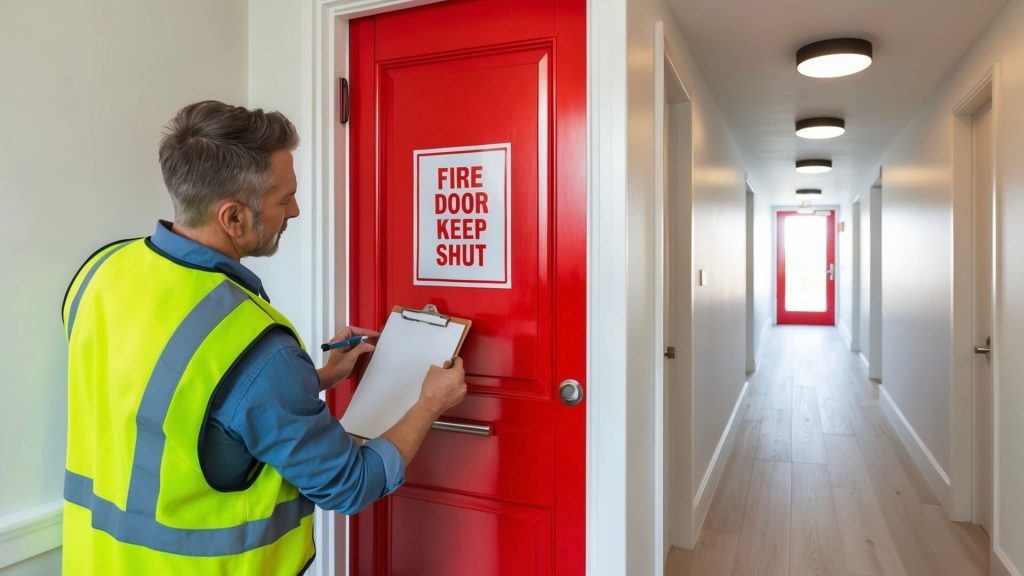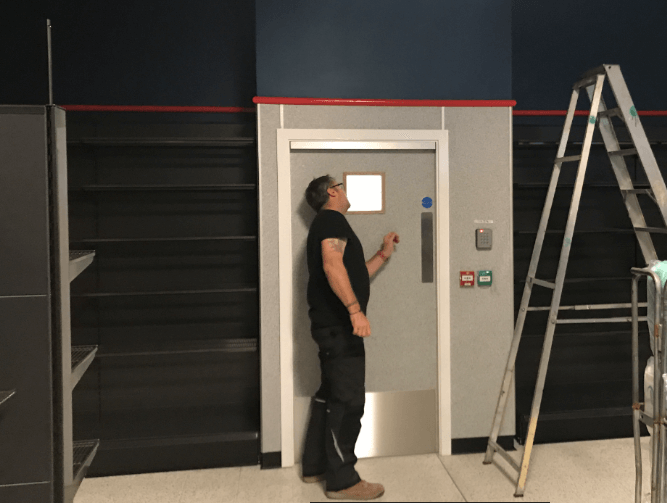
Fire doors are not simply a design feature. They are a critical part of fire safety measures in any residential or commercial building. Their role is to slow the spread of fire and smoke, protect escape routes and provide valuable time for safe evacuation. For property owners and managers, understanding fire door legislation in the UK is essential to staying compliant with the law and safeguarding the people who use their buildings.
Looking ahead to 2025, changes are expected in fire door legislation in the UK to strengthen safety requirements. These may include enhanced inspection and maintenance protocols, stricter certification standards, and clearer duties for those responsible for fire door compliance. Property owners and managers should stay updated on these upcoming changes to ensure their buildings remain safe and compliant with all new regulations.
Key legislation and regulations
The legal framework for fire doors in the UK is set out across several acts and regulations. The Regulatory Reform (Fire Safety) Order 2005 remains the cornerstone, placing responsibility for fire safety squarely on the “responsible person” – usually the building owner, manager or anyone in control of the premises. This duty includes ensuring fire doors are in good repair, efficient working order and properly maintained as part of the wider fire safety system.
The Fire Safety Act 2021 clarified that entrance doors to individual flats, as well as the external walls, fall within the scope of fire risk assessments. This reinforced the importance of flat entrance doors in containing fire and smoke between private dwellings and communal areas.
Most recently, the Fire Safety (England) Regulations 2022, effective from January 2023, introduced new duties for multi-occupied residential buildings above 11 metres. These require quarterly checks of all fire doors in communal parts and annual checks of flat entrance doors on a best endeavours basis. Building owners must also provide residents with information on the importance of fire doors and how they contribute to building safety.
Responsibilities of property owners and managers
Meeting legal requirements is more than a matter of carrying out occasional checks. A competent person should inspect fire doors regularly to confirm they remain in good working order. This includes checking that self-closing devices function correctly, door frames are intact, intumescent strips and smoke seals are undamaged, and that nothing compromises the fire resistance rating.
Fire doors must be included in the building’s fire risk assessment. For blocks of flats and other residential buildings, this means giving equal attention to front doors of individual flats and to doors protecting communal areas. In commercial buildings, fire doors protect escape routes and habitable rooms, making regular inspection equally vital.

Developing the right skills is key. Fire Doors Complete runs accredited training courses that equip building managers, inspectors and maintenance teams with the knowledge needed to inspect and maintain fire doors in line with legislation. This ensures checks are carried out competently and consistently, supporting compliance across all aspects of a building.
Standards and guidance
British Standards such as BS 8214 and guidance within Approved Document B set clear expectations for fire door performance. A new fire door must meet its specified fire rating and be correctly installed to achieve compliance. Maintenance of fire doors should be part of routine building management, supported by records of inspections and remedial work.
Checks of any fire doors should identify damage, excessive gaps, missing hardware or anything else that prevents the door from providing the required fire resistance. All aspects of the door set, from leaf to frame and closing device, must be kept in good repair and efficient working order.
Consequences of non-compliance
Failure to comply with fire door regulations can have serious consequences. Beyond the increased fire risk and danger to life, property owners may face enforcement action under the Fire Safety Order. Local fire authorities have powers to issue notices, fines and even prosecutions where buildings are found to fall short of legal requirements.

Best practice for compliance
To keep pace with new fire door regulations, building owners should:
- carry out quarterly checks of all communal fire doors
- arrange annual checks of flat entrance doors
- keep thorough records of inspections and maintenance
- ensure fire risk assessments address the condition and performance of fire doors
- engage competent persons to carry out inspections and remedial work
Fire door safety is a legal obligation, and also a moral one. By ensuring doors are maintained in good condition, property owners protect residents, limit fire spread and support safe evacuation in the event of a fire.
Building knowledge and competence
Competence is at the heart of compliance. The UK government and regulators have made clear that fire safety responsibilities must be met by people with the right skills and understanding.
By investing in proper training, property managers and building owners can ensure that checks of fire doors are carried out to the highest standard. This not only supports compliance with fire door legislation UK but also strengthens building safety for everyone who lives or works there. Regulation 10 specifically requires that the responsible person ensures fire doors in residential buildings are routinely checked and maintained to remain in efficient working order, supporting both safety and legislative compliance.
- For more information about our work, contact us here.
Frequently Asked Questions
What is the legal framework for fire doors in the UK?
The legal framework for fire doors in the UK is primarily governed by the Regulatory Reform (Fire Safety) Order 2005, which requires that fire doors are installed and maintained to ensure the safety of occupants and property. Additionally, the Building Regulations 2010 set out specific requirements for fire doors in new builds and renovations, including standards for materials, performance, and installation. Property owners must also comply with local fire safety regulations and conduct regular risk assessments to ensure their fire doors meet the necessary safety standards.
How did the Fire Safety Act 2021 change fire door requirements?
The Fire Safety Act 2021 clarified the responsibilities of property owners regarding fire doors. It specified that fire doors must be maintained regularly and ensured that they meet the required fire resistance standards. Additionally, it emphasized the importance of proper installation and maintenance checks to ensure that fire doors function effectively in the event of a fire, thereby enhancing the overall safety of buildings.
How often should flat entrance fire doors be inspected?
Flat entrance fire doors should be inspected at least once a year to ensure they meet safety standards and function properly. However, it is also recommended to carry out regular visual checks and maintenance, especially after any significant changes or incidents in the building that could affect the integrity of the fire door.
What common faults should you check for during a fire-door inspection?
During a fire-door inspection, you should check for several common faults, including ensuring that the door closes properly without any gaps, verifying that the frame is intact and securely fitted, inspecting the hinges for wear or damage, ensuring that the intumescent seals are present and in good condition, and confirming that the door is not damaged or warped. Additionally, check that any glazing is fire-rated and that the door hardware complies with fire safety regulations.
